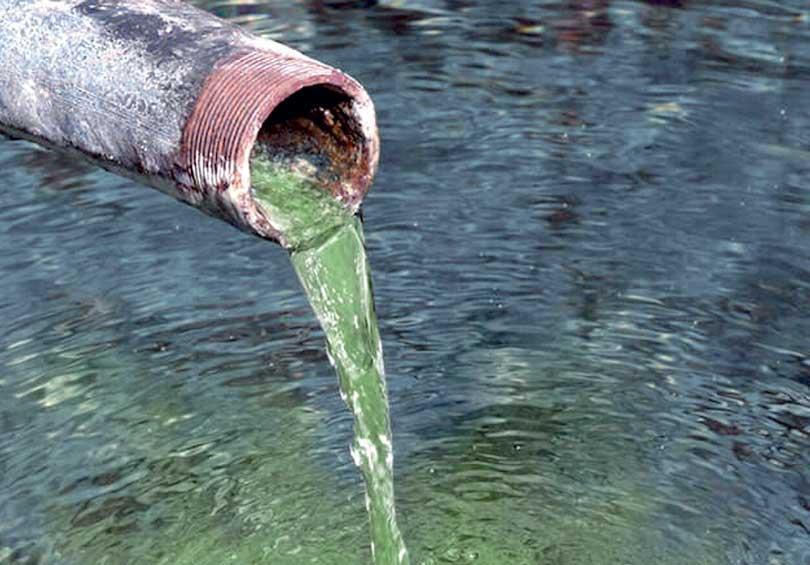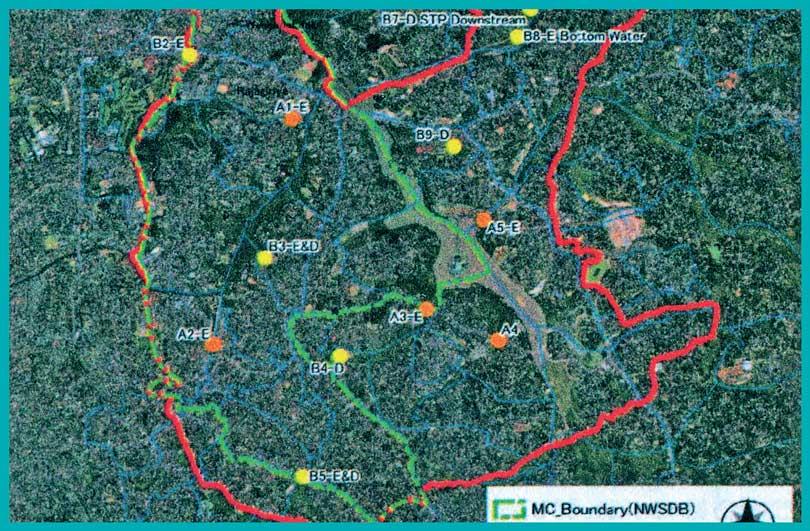Reply To:
Name - Reply Comment
Last Updated : 2024-04-20 00:00:00
Project slated to benefit Kaduwela, Dehiwela-Mount Lavinia, Maharagama and Kotikawatta-Mulleriyawa as well
 .
.
The project implementation had been scheduled to be completed within 2020-2031
By Chaturanga Samarawickrama
With the intention of improving the public health and water environment in Sri Jayawardenepura Kotte, the National Water Supply & Drainage Board (NWSDB) had finished the development process of the strategic master plan for a Wastewater Management Project with the assistance of Japan International Cooperation Agency (JICA).
Holding a stakeholder meeting in Colombo, Premises Management Engineer of the NWSDB, W.Y. P. Perera said the waste pollution problems caused by rapid population growth and land development had became a serious issue.
“Therefore, to overcome these challenges, the government sought assistance from the Japanese Government to develop a Strategic Master Plan to a ‘Wastewater Management Project’ in the sewerage sector to improve the waste environment in the country,”
he said.
He said during the first phase of the project, 15 priority cities including Sri Jayawardenepura Kotte Municipal Council were identified to implement the project in terms of their urbanisation, sanitation Urban Development, the sustainability of sewerage service and water environment.
During the second phase, city sewerage master plans for five cities including Sri Jayawardenepura Kotte Municipal Council were carried out.
The project feasibility study on Sri Jayawardenepura Kotte was started in
June 2017.

Once the project is completed, it would benefit a total of 218,800 persons for their sewerage problems
The project implementation had been scheduled to be completed within 2020-2031. The construction work of the sewerage will commence from mid-2024 to mid-2030 under four construction stages. Each construction stage consists of a one-year defect liability period.
The stage one, two and three require about four years while six years would be required for the fourth.
Before implementing the project, the JICA had considered a guideline of thirty items in line with the Environmental and Social Consideration (ESC). The guidelines categorised in to three groups; pollution control, natural environment and social environment.
Once the project is completed, it would benefit a total of 218,800 persons for their sewerage problems.
A total of 8.66 hectares (ha) of land is needed for the project. The project feasibility study has identified about 3.74 hectares for flood retention areas, 0.2 hectares for the access road and canals and 0.29 ha. for seven major pump stations. A land area of 8.6 hectares from a total of 30 owners are to be acquired.
The legal owners of lands to be compensated by replacing the cost according to the current market value of the lands in the vicinity of the affected land. Trees and other valuable entities which are owned by persons with legal ownership of the land will be compensated according to the market price. Legal or non-legal structures owners would be provided with cash compensation at replacement cost and for the loss of their business income.
After three years of gathering information relating to the proposed project, project components and costs, institutional arrangements, environmental and social considerations, the report would be compiled and handed over to the Sri Lankan Government.
The Wastewater Management Project will operate in an area of 2,920 hectares in the Sri Jayawardenepura Kotte MC and the surrounding areas including Kaduwela MC, Dehiwela-Mount Lavinia MC, Maharagama Urban Council and Kotikawatta-Mulleriyawa Pradeshiya Sabha covering a population of 206,000 as recorded in 2012.
The project will convert the Wastewater less than the hundred of chemical oxygen demand (COD) from its original COD 600. The standard would be decided by the NWSDB based on Environmental Impact Assessment (EIA) report on November 2, 2019.
The project would consume 30,000 metric tons of sewerage waste per day and discharge them to the Diyawanna Oya through drains only after purifying them. The final result is 17 times higher than the standard (1,000 Most Probable Number (MPN)/ 100 millilitre). This includes 15 times higher than the standard of Ammonia-nitrogen value (0.59 miligrams per litre).
The project had proposed Micro Tunnelling Technology (Which will go a length of 36 km) as the application of Pipe Jacking to avoid traffic jam while following the security regulations for safety measures.
There would be an open cut of 249 kilometres in length on the ground. Once the pipe laying paths are finished, they would be washed to minimise the dust emission and reinstate to original condition.
Also, the project follows an advanced odour treatment methods than the Biological Filter Treatment method which is presently used in our country. With the new technology, odorous components would be removed by activating carbon and chemicals attached to the surface of the activated carbon. The odorous substances will be removed by both physical absorption and chemical reaction.
After preliminary treatment, the wastewater will receive biological treatment through naturally occurring bacteria. The generated sludge would be disposed through a private sector company in Kerawalapitiya and sent to an energy plant.
“The sludge that is eventually produced will be dried, then composted or used in waste-to-energy plants. The sludge disposal in accordance to sludge disposal regulations stipulated by the Central Environmental Authority (CEA) or European Union (EU) directives,” the premises engineer said.
While residents are largely supportive of the project, those around Heenatikumbura are worried. They fear the wastewater treatment plant might not be maintained to national and international standards and, therefore, they will have an unpleasant living environment. They are afraid of having to experience gulley bowsers loaded with sewage coming frequently to their neighbourhood and of being exposed to health risks.
Several residents in Heenatikumbura said they have no faith in the project, when a similar project in Soysapura, Moratuwa had resulted in residents suffering through an unbearable stench for the past six years.
The sludge that is eventually produced will be dried, then composted or used in waste-to-energy plants. The sludge disposal in accordance to sludge disposal regulations stipulated by the Central Environmental Authority (CEA) or European Union (EU) directives
“We do not trust the plans that have been set up. The authorities said they are diverting wastewater elsewhere but we are sure they will divert sewerage water here. These are lands that were cultivated for years, we don’t want these fields to be destroyed in such a manner,” they said.
Several other reasons emerged during community consultations.
The Premises Management Engineer Mr Perera said, however, “Most of the residents’ fears and anxieties are reversible and could be mitigated with increased awareness, design stage measures, implementation of comprehensive contingency plans, operational procedures, and plant management plans.
The premises engineer said that technological knowledge would be used to make this project a success with the knowledge of experts who have gained experience in Japan. However, there is no plan made to establish this project contrary to environmental ethics and laws.
Finally, the villages of Heenatikumbura came to an agreement with the optimism that this project for the wastewater management at Sri Jayawardanapura Kotte MC would
become a success.

The head table at the meeting comprised of
D.N.D.S Gunatilleke - DGM sewerage (NWSDB), P.V.I.P Perera (CECB) - Environmental Scientist (EIA study team leader), Tetsuo Wada - Team Leader JICA Expert Team, Koji Kimura - Deputy Team Leader of JET -JICA Expert Team, W.S.R. Perera - Engineer (sewerage) NWSDB, E.M.K Ekanayake - Assistant General Manager (NWSDB), D. Senavirathne - JET -JICA Expert Team consultant and W.Y.P Perera - Premises Management Engineer
of NWSDB.

Add comment
Comments will be edited (grammar, spelling and slang) and authorized at the discretion of Daily Mirror online. The website also has the right not to publish selected comments.
Reply To:
Name - Reply Comment
On March 26, a couple arriving from Thailand was arrested with 88 live animal
According to villagers from Naula-Moragolla out of 105 families 80 can afford
Is the situation in Sri Lanka so grim that locals harbour hope that they coul
A recent post on social media revealed that three purple-faced langurs near t